Torres de Paine National Park: Timeless Trip to the Cuernos del Paine (2025 Update)
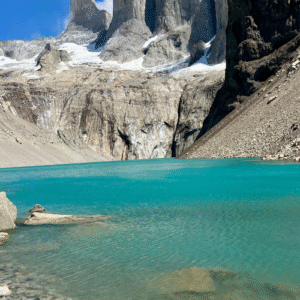
Dear Traveler,
Some places don’t just call to us; they stir something inside of us. Located in the isolated wilds of Patagonia, Chile, Torres del Paine National Park is one such place—a land of wind and stone and sky and ice that affords peace to the soul and trials to the body.
As we slide into 2025, this mythical place keeps beckoning visitors further south. Whether you’re in search of the W’s excitement, the O Circuit’s isolation, or only the tranquility of glassy lakes and towering spires of rock, this guide (including insider input for 2023, 2024, and new updates for 2025) will help you plan, prepare, and visit Torres de Paine with intention, ensuring you fully experience the beauty of Torres de Paine.
🌍 Torres del Paine: Where Is It?
Torres del Paine is located in the Magallanes Region of southern Chile; it’s located about 112 kilometers north of Puerto Natales, the nearest town of any size. Part of the Southern Patagonian Ice Field, the park covers over 1,800km² with a variety of landscapes including jagged peaks, glacial lakes, lenga forests, and windswept steppe.
The name of the park is a mix of Spanish and Tehuelche: “Torres” is Spanish for the soaring granite towers; “Paine” is Tehuelche for “blue,” pronounced “pie-nay.”
During this time, visitation to Torres del Paine, a UNESCO Biosphere Reserve, grew to over 250,000 visitors in 2023; in 2024, a new digital permit system was introduced to ensure transportation systems keep track of visitors arriving from cruise ships to provide a sustainability-focused management of the destination. Visitors are now experiencing more seamless, immersive, and environmentally conscious tourism than ever in 2025.
🗓 Why Visit in 2025?
- 🌄 Exploring the Glories of Torres de Paine: A Journey Through Patagonia’s Natural Wonders
- 🌄 Discovering the Wonders of Torres de Paine: Why It’s a Must-See in 2025
- Here are several reasons why 2025 is the perfect time to visit Torres del Paine:
Torres de Paine is not just a destination; it’s an adventure waiting to unfold. Discover the breathtaking landscapes and vibrant wildlife that make this park a must-visit location.
For Chile’s “Ruta Natural” initiative in 2023, there’s a focus on ecotourism and eco-adventure, encouraging visitors to explore national parks as a way to make Torres del Paine known again to international visitors after the pandemic.
The park implemented its paperless QR entry permit system in 2024, which minimized paper waste and decreased the time people spent waiting in line.
But for 2025, better trail signage, improved campgrounds, and electric shuttle buses have all made the experience more user-friendly, while keeping sustainability front and center.
If you’re looking for wild beauty without compromise, Torres del Paine in 2025 has it all: timeless landscapes, contemporary comforts, and a way to commune with nature at its most primal.
🥾 Hiking the W Trek and O Circuit
There is an awful lot of Torres del Paine that is much more than a physical challenge; it’s a spiritual quest. Whether you opt for the popular W Trek or the more ambitious (and longer) O Circuit, each trail opens onto dramatic peaks, ice-blue rivers, and raw, unspoilt landscapes.
🔹 The W Trek
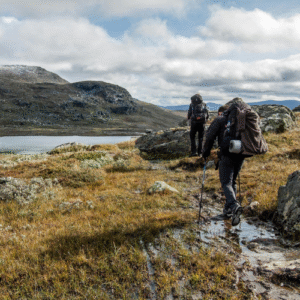
The W Trek is the park’s most accessible multi-day trail: it usually takes 4 to 5 days to hike. In 2023, it was listed as one of the “Top 10 Treks in the World,” a distinction it still deserves.
The path follows a “W” shape, and sites along it are
A morning hike to the Base of the Towers, where golden light casts the granite spires in soft light;
A spectacular ascent on the French Valley, with hanging glaciers and jagged peaks;
A visit to the strong, shape-shifting Grey Glacier — one segment of the Southern Patagonian Ice Field.
🔸 The O Circuit
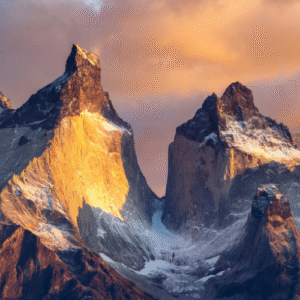
More remote and less visited, the O Circuit encircles the entire park in 7 to 10 days. It was especially popular with wilderness lovers in 2024 because it leads you into the backcountry, well out of Wi-Fi range and tour buses.
Highlights include
Cross the mighty John Gardner Pass — a wind-whipped ridge above a sea of ice;
Overnighters at remote camps like Dickson and Los Perros;
Close wildlife encounters and alpine solitude — untouched, unspoiled, unforgettable.”
🧳 What to Pack: Tips for 2023–2024
And your brethren from 2023 and 2024 will second this: Packing (well) can make or break your Torres del Paine experience. The weather in the region is famously fickle — sunny one minute, rainy the next, and with gusts hard enough to bowl you over.
Essentials include
Waterproof jacket and pants: breathable yet fully sealed;
Base layers: These will be merino wool or synthetic (for warmth without bulk);
Mid-layer fleece or down: This is a must-have to keep the chill away in the morning and after sunset.
Hiking boots: don’t want to take them off, broken in, ankle-supporting, and waterproof;
Head lamp, trek poles, and a pack rain cover;
Water filter or purification tablets: Fresh water is plentiful, but not potable.
Snacks and freeze-dried meals: Foods that are high-energy, lightweight, and simple to cook.
In 2024, vacationers could find nicer rentals in Puerto Natales, including eco-friendly camping kits and solar-powered charger,— both useful in 2025.
🏕 Accommodation Options: Refugios, Camping, and Luxury Eco-Lodges
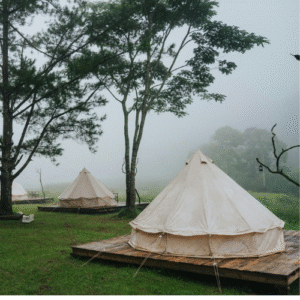
Lodges in Torres del Paine run the gamut from no frills to swanky, though all offer some combination of simple shelter and some form of comfort for nature lovers who prefer to sleep in.
Refugios:
These way stations in the mountains include bunk beds, hot meals, and common rooms. Popular spots include:
Refugio Torre Central: perfect for Base Tower hikers;
Refugio Los Cuernos: situated on the shore of Lake Nordenskjold
Refugio Paine Grande: ferry access, panoramic views of the lake.
Refugios were sometimes fully booked for March 2023 and February 2024. In 2025, it’s prudent to book at least six months ahead.
Campgrounds:
There are free and paid sites — such as Campamento Italiano, Ser, on, and Grey — and most require bookings, given 2024’s capacity restrictions.
Luxury Lodges
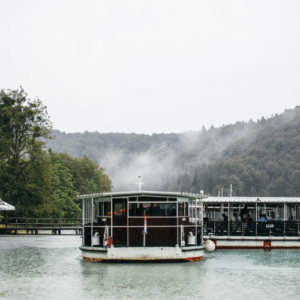
If you’re not focused on trekking, take pleasure in these remarkable stays located just outside of the park:
Explora Patagonia: comes with full board, private guides, and stunning views;
Tierra Patagonia: architectural sophistication combined with 5-star service.;
Hotel Las Torres: easy access to day hikes and wildlife tours.
In 2024, these lodges extended their platforms of sustainability — from solar energy to locally sourced menus — redefining responsible luxury for 2025.
🚍 Getting There: Updated for 2025
To get to Torres del Paine, you will fly to Punta Arenas and then take a bus or shuttle to Puerto Natales (about 3 hours). You’ll then catch a direct bus to park entrance,s including Laguna Amarga, Pudet,o or Administración.
New in 2025: Visitors seeking to protect their footprint as they traverse this fragile ecosystem can now do so by taking electric buses and carbon-offset ride shares.
🐾 Wildlife Encounters: A World of Animals
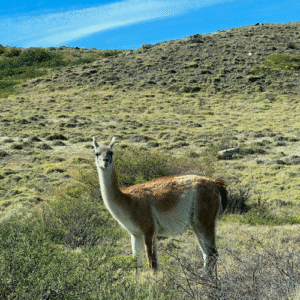
Torres del Paine is not just about the vistas; it’s a refuge for native species. Conservation Measure. It is understood that from 2023-4, the sightings of:
Pumas, particularly around Lago Sarmiento;
Guanacos, browsing at will on the open pampas;
Andean condors, soaring over the French Valley cliffs;
Huemuls, an endangered species, have now returned in small quantities.
For the ultimate wildlife experience, opt for a guided puma-tracking tour, which is now led by indigenous guides trained to seek wildlife without disturbing it.
📸 Best Photography Spots

As photographers learned in 2023 and 2024, Torres del Paine is a dreamscape. Bring extra batteries and memory cards — you’re going to need them.
Don’t miss:
Mirador Las Torres: the peaks take on a fiery hue at sunrise;
Vista del glaciar Grey: desde el puente colgante;
Salto Grande: roaring falls nestled between snow-capped peaks;
French Valley: particularly after new snow.

Latest pro tip for 2025: Visit during the shoulder season (October or April) when you’ll encounter fewer people and soft, cinematic light.
🗓 When to Visit
High Season (Dec–Mar):
Perfect for beginners; long daylight hours and full access to the trails. The W.C.C. will play there in 2023–2024, however, and the expectation is that there will be a big crowd and a big price tag.
Shoulder Season (Oct–Nov & Apr):
Cooler temperatures, fewer crowds, great for photographers and those more experienced in travel. Bigger in 2024. Also popular this month and will be so in 2025 too.
Winter (May–Sept):
Relaxing snow-covered serenity, minimal hassle; best for experienced trekkers or winter lodge guests.
💵 The Cost of Torres del Paine
- Item Estimated Cost (USD)
- Park Entry $35–45
- Refugios (per night) $60–100
- Campsites $8–15
- Eco-Lodge (per night) $400+
- Meals (in-park) $15–25
A round-trip transfer to/from Natales will cost between $25 and $50.
From 2025, think about the new Senda Verde Pass: a combined entry ticket to the park, campsite, and offsetting of carbon emissions.
🧭 Recommended 77-Day Trek Itinerary
Day 1: Arrive in Puerto Natales_supported:Resizable=Belongings Arrive in Puerto Natales
Day 2: Shuttle to Laguna Amarga + trek to Refugio Torre Central
Day 3: Early morning trek to Base Torres + overnight at Los Cuernos
Day 4: Hike French Valley + camp at Paine Grande
Day 5: Hike to Grey Glacier
Day 6: Kayaking or ice hike (opt)
Day 7: Back to Puerto Natales
Refined over hundreds of 2023–2024 traveler reviews, this itinerary gives a manageable yet dramatic overview of the park.
📝Closure: Why Torres del Paine Stays with You
In each gust of wind, each crack of ice, each first light over the shimmering granite towers — Torres del Paine has a story to tell. It’s a story of resilience, raw beauty, and the silent victory of nature over time.
Whether looking at 2023 or 2024, more travelers are prioritizing destinations that matter — places where the challenge is worthwhile for the meaning. Torres del Paine is just that.
And today, in 2025, it greets you — more thoughtfully than ever.
